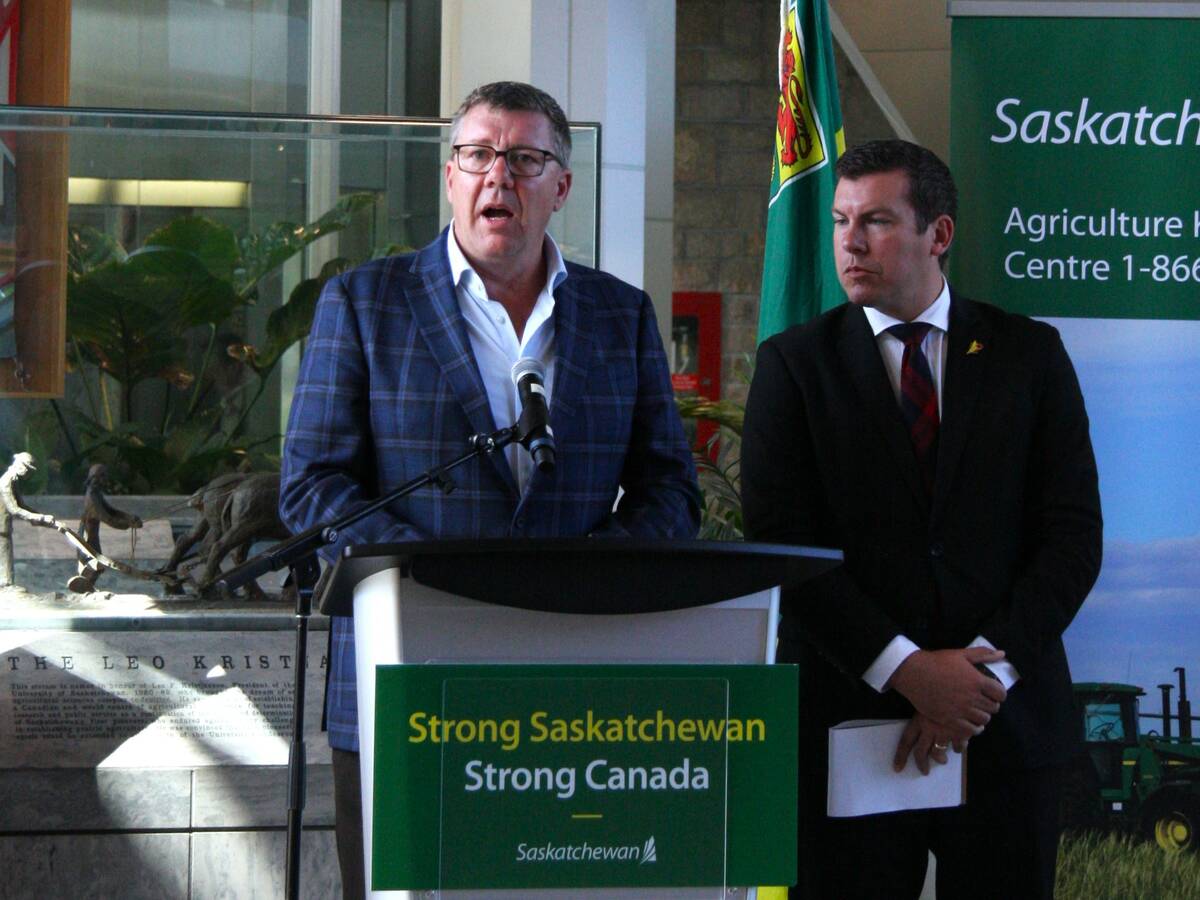According to the National Farmers Union’s analysis of the income crisis in Canada’s cattle industry, 1989 changed everything.
Between 1944 and 1989, Ontario fed steer prices fluctuated but with an inflation-adjusted level of $140 per hundredweight as its bottom.
After 1989, the $140 bar became the maximum with fluctuations much lower, including post-BSE and during the past few years of low returns.
“In 1989, something changes and you start to see that the normal range now becomes less than what the lowest part of the normal range was before, so even the highest of our new normal is below what was the lowest of the old normal,” Ontario NFU official Grant Robertson told members of the House of Common’s agriculture committee March 3.
Read Also

Key actions identified to address canola tariffs
Federal and Saskatchewan governments discuss next steps with industry on Chinese tariffs
NFU members used their appearance in front of the committee to explain a livestock sector analysis that is the basis of NFU meetings across the country.
Manitoba NFU official Fred Tait offered the report’s view of what happened in 1989 to change everything.
Cargill came to Canada and quickly the packing industry began to restructure with plants closing and domestic companies bought out. As a result, two packers now dominate the Canadian industry.
The Canada-U.S. Trade Agreement was signed and the Canadian cattle industry began to expand to fill growing export markets, making the industry dependent on U.S. access and U.S. pricing.
Packers in the United States and Canada began to acquire cattle herds, and the “captive supply” could be used to keep market prices low.
The NFU also laid out its prescriptions: ban packer ownership and control of cattle, break corporate concentration, test for BSE and ban hormone use, help create farmer owned packing plants, implement country-of-origin labelling and immediately send aid money to farmers.
Tait issued a warning to Conservative MPs on the committee who have been critical of the NFU and its anti-corporate, trade-skeptical analysis.
“I would remind some of the members present who see rural Manitoba and rural Canada as their power base, be careful what you’re doing in weakening the power base of the constituency that keeps you in office.”
The NFU presentation was part of a long committee meeting that featured witness analysis about the livestock sector crisis that did not always parrot mainstream livestock groups and government arguments that increased exports and deregulation are the answers.
Bill Jeffrey, president of Ontario’s Perth County Beef Farmers’ Association, said farmers are consistently losing money, which will change only when supply is brought more in line with demand and farmers are more aligned with consumer needs.
Manitoba Interlake producer Henry Rosing worried that American country-of-origin labelling rules and international protectionism will drive many Manitoba producers out of business.
“People in Hong Kong are better at producing toys, not very good at producing beef,” he said.
“The Interlake is very good at producing beef but I don’t look forward to start producing cheap toys.”
The NFU analysis was largely ignored by Conservative MPs, although Manitoba cattle producer and former agriculture committee chair James Bezan said he agreed with at least one NFU concern.
“I do have a concern about packer-controlled cattle and packer ownership specifically.”
However, he said the impact should not be exaggerated.
Opposition MPs lobbed softer, more supportive questions.
In answer to a Bloc Québécois question, Robertson said the primary need is to get cash to producers and to end packer ability to manipulate markets through access to captive supply.
Tait said much recent history has been dedicated to proving that communist central planning economies do not work.
“We were successful in that only to have it replaced domestically by a centrally planned non-competitive market system that pulls all the wealth out of rural communities.”
















